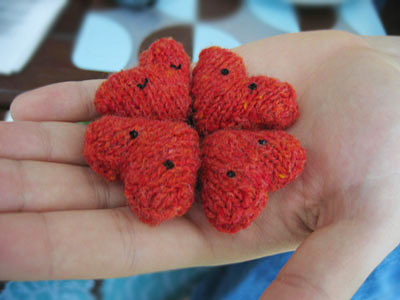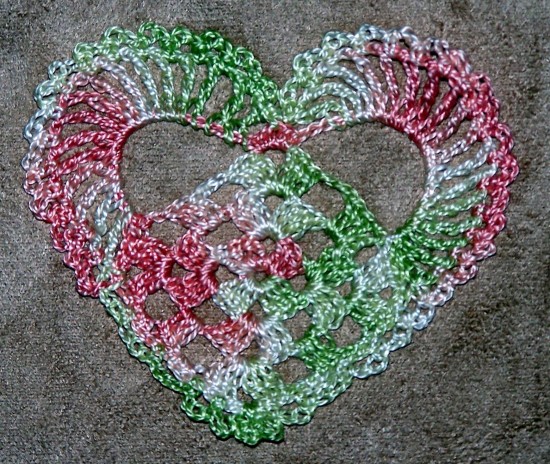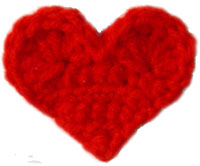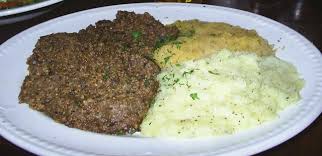
Crossed DC
The crossed dc is worked over an area of two stitches. To begin, skip the next stitch. Yarn over the hook, with the hook ready to begin making a double crochet in the following stitch.
Make a double crochet in the stitch that follows the skipped stitch.
Making a double crochet in the stitch that was skipped: Cross the hook in front of the dc just made and, with the working yarn strand in the back, pull the strand through the skipped stitch and pull it to the left of the dc-just-made, so that the first part of the dc being made in the skipped stitch wraps across the post of the dc-just-made. Next, yarn over the hook, pull yarn through two loops, yarn over hook again and pull through the last two loops to complete the dc.


Materials: Camouflage print DK 100g, 4.5mm hook, darning needle.
Pattern: ch 31,
Row 1: sc to end,
Row 2: ch 2, sk 2 sc, 1 dc into 3rd st, 1 dc into 2nd sk st,* sk 1 st, 1 dc into 2nd st, 1 dc into sk st,* repeat to end.
All subsequent rows worked as Row 2.
Repeat until desired length is reached and break off yarn.
This pattern is offered and made available for personal use only. If you wish to reproduce this in any way please contact me or make sure that reference is made to the original author’s blog http://www.goodtimesithinkso.blogspot.com/ Thank you Crochet Conversion Chart US/UK International Yarn Weight Conversion Chart
I hope you enjoy using this pattern and if you are looking for other free patterns please visit Crochet Pattern Central

















 If you're making your own haggis, you'll have to start preparation a day in advance. For a variation on the Bashed neeps, you can make Orkney clapshot (which is often served with haggis). Mix the mashed seasoned swede with an equal quantity of mashed potato and beat well until smooth. This mixture can be put into a pie or gratin dish, thickly covered with grated cheddar cheese and baked in the oven, or under the grill, until browned.
If you're making your own haggis, you'll have to start preparation a day in advance. For a variation on the Bashed neeps, you can make Orkney clapshot (which is often served with haggis). Mix the mashed seasoned swede with an equal quantity of mashed potato and beat well until smooth. This mixture can be put into a pie or gratin dish, thickly covered with grated cheddar cheese and baked in the oven, or under the grill, until browned.










![[1717144_IMG6.jpg]](http://lh3.ggpht.com/_e8H9ZDuriy0/Spb4s8RhZRI/AAAAAAAAAX4/i_sksWB7QIU/s1600/1717144_IMG6.jpg)

















